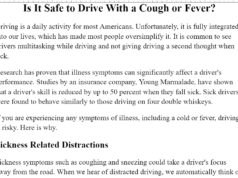SPONSORED CONTENT
The majority of personal injury claims involve new injuries. However, the claim may also involve aggravation or making a pre-existing condition worse.
In legal terms, a pre-existing injury or condition refers to a medical condition or injury that existed before a person was involved in the accident in question.
Personal injury claims that involve pre-existing conditions can be pretty complicated. Often, the defendant can cite the pre-existing condition as a reason to reject a claim or lower the value of your compensation. If you have been in an accident that you believe has worsened your pre-existing condition, your best chance of getting a fair outcome is working with an injury lawyer.
Disclosure Of Past Injuries
Often some injury victims make the mistake of withholding information about pre-existing conditions. The problem with failing to disclose your pre-existing condition is that if the defendant insurer decides to dig up your medical history and discovers a pre-existing condition, the value of your claim settlement can come down significantly. Therefore, you may want to state any medical condition you may have had before an accident when filing a claim.
Proving A Pre-Existing Condition
Whether reported or not, pre-existing conditions present a significant challenge to a personal injury claim. Your attorney will have to prove through evidence that the accident made your situation worse. A lawyer may need to call your doctor as a witness or hire an independent medical professional to help in reviewing your medical history and establish how the accident in question could have contributed to the aggravation of a pre-existing condition.
Prior medical records are one of the most critical pieces of evidence when determining the aggravation of a pre-existing condition after an accident. By comparing pre-injury with post-accident records, your injury attorney can point out the difference in the level of healthcare needed to prove aggravation of the existing condition.
Employment records can also play a role in establishing how an accident made your condition worse. An excellent example is if you were working despite your condition but could not do so after the accident due to the injury aggravation. In such a case, your lawyer can present that fact in the lawsuit as evidence. Other forms of evidence applicable in proving injury exacerbation include witness testimonies of the people you interact with and the hobbies you enjoyed and now cannot due to the accident.
The “Eggshell” Theory
Sometimes a pre-existing condition may not be considered in a case. For example, say, an older adult has severe osteoporosis, suffers a slip and fall accident at a grocery store, and sustains a broken hip. If the business owner is liable for the fall, they will be responsible for all their damages under “The Eggshell Theory.”
Under this rule, a person is taken “as they are” without speculating on what could have happened had the victim not had the condition that predisposed them to a severe injury.
Under normal circumstances, the presence of a pre-existing condition does not mean that your claim is doomed. However, the complexity of your claim can rise exponentially, and it would be best to get yourself a lawyer.











